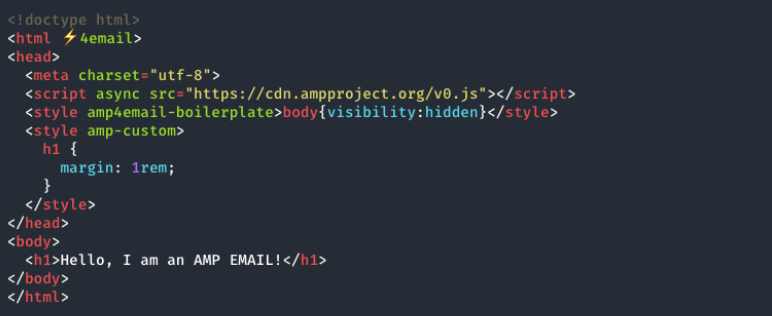Email is a dependable, desired, and…and while we’re being honest, a bit of a dated communications monolith. My colleague Len Schneyder put it best when he said, “However, as grandiose as email’s scale and reach has become, the experience in the inbox has been mostly static.”
AMP for email changes that narrative for some senders–at least a little.
AMP stands for accelerated mobile pages and is a way to provide dynamic email to recipients. The technology combines HMTL, CSS, and JavaScript components to serve dynamic content. Google initially released AMP for websites in 2016. AMP for email followed in 2019, and the technology provides email developers and marketers similar and increased functionality. The goal remains the same here: dynamic content within emails that quickly loads (and hopefully increases engagement).
Note: Only Gmail addresses will be able to render AMP emails, and your ESP needs to build support in their systems in order for you to leverage the technology (yes, Twilio SendGrid does). Check with your current ESP to determine if you can start building and sending AMP emails.
Curious about whether or not you should test out AMP for email campaigns or transactional flows? This post provides some AMP for email use cases, questions to consider before using AMP for email, and other best practice tips.
AMP for email components
Emails that use AMP can provide an enhanced experience for recipients. For example, AMP emails can include:
- An image carousel – This use case would lend itself to a clothing or e-commerce B2C brand that wants to provide a way to showcase products without creating a long, scrolling email.
- Dynamic form submission – Known as an AMP form, this feature allows recipients to fill out a form within the email itself instead of navigating to another web page. This would be a great use case for a brand that wants to send out a quick survey/pulse check or event signup capability.
- Appointment confirmation/cancellation/change – Restaurants, salons, and spas are only a few of the types of businesses that could benefit from sending AMP emails that allow recipients to confirm, cancel, or modify a reservation or appointment.
For a complete list of the supported email components, head over to the repository for AMP email components.
Should you start using AMP for email?
Before building (or asking your developer to help you build) AMP email campaigns, first ask yourself the following questions:
Will sending dynamic content with AMP emails provide enhanced value to the recipient or will it only cause friction? If there is even a sliver of risk of causing friction for your recipient, forgo using the AMP components. If you send a weekly newsletter to your clients with 3 relevant blog posts, there’s no real compelling reason to build in the AMP functionality. There’s still a lot to be said for sending a solid, yet simple email!
Does the email content I send have an expiration date? If you are sending promotional emails that have an expiration date, you might consider using AMP for email to ensure only up-to-date content is displayed in the email—even after it’s been sent out.
Am I only wanting to try this because it’s new and shiny and I can brag about it to my team and boss later? Ok, this one is a bit rhetorical, but always keep in mind that new technologies don’t have to be used in every circumstance. And if your recipients already engage with your emails, you may not need to go barking up the AMP tree. We aren’t here to discourage the use of AMP but just want everyone to be realistic about what value it can truly bring to your email program.
How to start building AMP emails
After you’ve decided that your email program would benefit from AMP emails, and that your ESP supports it, you’ll start by grabbing the AMP email boilerplate code:
The AMP email documentation will walk you through each specific step you need to take depending on what type of element you want to add. For example, if you are adding a dynamic image, instead of using just the tag, you’ll use
Throughout the process, you can experiment and test your elements using Google’s AMP playground to ensure you’ve built working functionality.
Takeaway Tips
AMP for email is an exciting way to enhance your emails and communicate with your customers and prospects. As with any new and emerging email trend or use case, we always advise people to test, test, and test some more. A/B testing interactive emails with a control group will show you how well recipients engage with your interactive emails.
And remember, AMP for email could be a great option for many, but it doesn’t necessarily mean it will be right for your email program. A simple email that receives high engagement will be more successful than an email made unnecessarily ornate by emerging technologies.
Always keep your program goals close and keep an eye on your delivery rates as you begin to play around with dynamic AMP email content. For more tips on how how to achieve the highest possible delivery rates, read through our 2020 Email Deliverability Guide.

